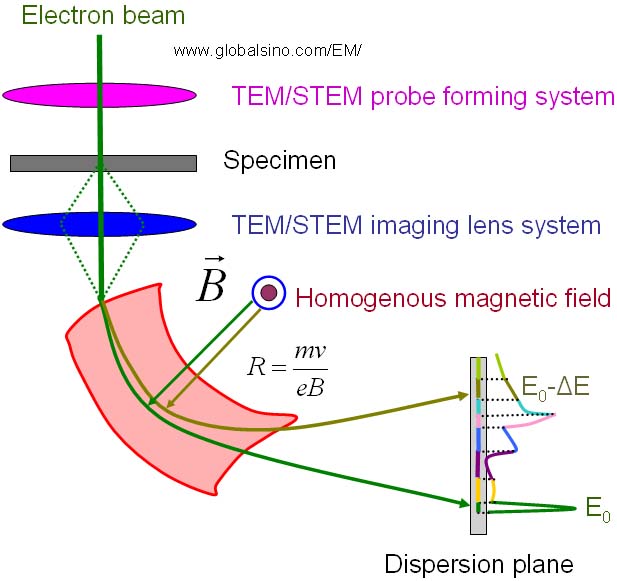=================================================================================
The most common electron spectrometers today, especially in STEM instruments, are based on magnetic sector prism (the spectrometers are called sector magnet spectrometer), such as Gatan GIF systems. An important reason for its popularity is that they are not designed to be in-column, but can be attached as a peripheral to an existing EM column.
As shown in Figure 3777, electrons with a greater energy loss ΔE moves in a smaller velocity v, so that the radius R of the trajectory is smaller due to R=mv/eB. Therefore, these electrons with greater ΔE are deflected further than those suffering zero loss.

Figure 3777. Schematic illustration of a sector magnet spectrometer mounted on a TEM/STEM column.
Another advantage with this type of prisms is that they can focus the beam to form a line spectrum in the dispersion plane (see Figure 3777). In this plane, the electrons are typically dispersed by ~2 µm/eV. Some spectrometers are fitted with a mechanical slit at this plane so that it can be used to select part of the spectrum.
An additional function of the prisms is to correct the second-order aberrations for a given distance (typically ~70 cm) between the object and the prism. Small adjustment of coupling the prism with the TEM optical system can be made using sextupoles near the prism and by adjusting the mechanical tilt of the prism.
|
